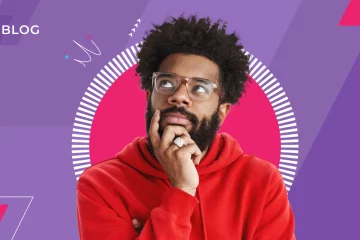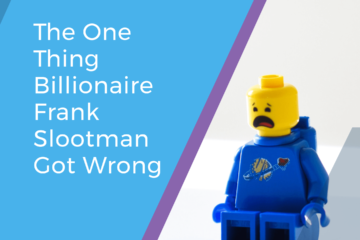Change the Game in 5 Minutes: How Mavenlink improved their renewal rate predictability with 86% accuracy!

Welcome to Change the Game in 5 Minutes Series. Our CEO, Nick Mehta, recently spent time with Sabina Pons, Global Vice President of Customer Success and Support at Mavenlink. She and her team created the ultimate customer journey. With clear insight into post-sale and implementation revenue and growth, they have a long-term vision of renewal predictability. Their renewal rate accuracy caught Nick’s interest and how Sabina operationalized a brand new customer journey for Mavenlink.
Nick: Sabina, it’s good to connect with you first of all. You’ve been an incredible friend to Gainsight and the whole CS community.
Sabina: Thank you so much for asking me to speak with you.
Nick: Sabina, I wanted to talk to you about your Game-Changing success over the last five years with Mavenlink. Tell me about your organization and what it does.
Sabina: Mavenlink is a Southern California-based B2B SaaS company with a global presence. Mavenlink is a modern software platform for professional and marketing services organizations. It is the only solution that helps services firms establish an operational system of record that facilitates their business lifecycle, including key capabilities like resource management, project management, collaboration, project accounting, and BI
Nick: Interesting. And what’s your role at Mavenlink?
Sabina: At Mavenlink, I oversee the adoption, expansion, renewal, and loyalty programs. I am also responsible for the support team, delivering 24 by 7 technical support. Additionally, I built the third division this last year, the business’s community and loyalty arm. It’s our first user community and first customer advisory board.
Nick: What’s the mission of your team and organization?
Sabina: When I joined Mavenlink in 2016, the Customer Success mission was evolving. Previously, the team was in a reactive mode and lacked any direct revenue responsibility. A strategic customer journey was absent, let alone an operationalized one. The systems I inherited were built for survival, not for scale. There were only four CSMs, one of which had 500 client accounts to manage. I had the honor of formulating the first formal customer journey, inclusive of adoption, expansion and renewal activities. We started with a one size fits all approach. Then, we had to iterate from there.
Nick: That’s a challenging, yet commonplace to start. What were the steps you took to develop the right customer journey?
Sabina: The goal was significant revenue growth with Mavenlink by way of creating a remarkable customer experience. First, we developed and implemented segmentation models. Next, we hired the right profile of resources to help drive revenue—the idea centered on building a team with the right skills and expertise and doing so across the globe. Lastly, it was genuinely game-changing when I received final approval to proceed with Gainsight, which improved our business in so many ways.
Nick: Before we talk about Gainsight, tell me what identified problems you were solving as you moved into the operational phase?
Sabina: With post-sale revenue management as our primary responsibility, we had to change the way we measured our performance. At Mavenlink we like to look at the positive – we measure retention instead of churn. Before Gainsight, we had manual forecasting for end-of-month renewals. However, we lacked leading indicators of revenue retention. We used spreadsheets in long meetings, going deal by deal each week, to ascertain how we could close out the month’s contract renewals.
We lacked the foresight to know how we were going to perform for any given period. We knew customers were due to renew. We understand what that cohort of customers represented in terms of recurring revenue. However, we lacked the ability to confidently forecast fiscal quarters, let alone months, in advance.
Nick: It’s a difficult place to be. Is that when you decided to operationalize with Gainsight? And what were the signs you were making an impact?
Sabina: The two key signs were both problems and opportunities. The first was the lack of visibility to see future numbers. We were making crucial business decisions with only a sliver of the necessary information. For me, I used the analogy of looking under a microscope to see the ocean. We were scientifically confident about the information in front of us but lacked certainty about the vast beyond.
Nick: What a great analogy. And the second sign?
Sabina: The second sign was the time spent formulating a forecast. We had an archaic health score based on three nuanced usage metrics of our application. It was messy, complicated, and frustrating. Preparing for executive meetings and gathering data for board meetings was stressful.
Nick: You mentioned the lack of a customer journey. Explain that pain point and how you solved it?
Sabina: Progress was impossible with the lack of an operationalized customer journey. It’s one thing to tell your team what to do, but it’s hard to hold them accountable, managing from spreadsheets. We needed a customer success automation tool and a reliable scorecard. So, we made it. I think it’s been critical to our success. We now can predict retention with an 86% percent accuracy rate because of the site scorecard. That’s literally game-changing.
Nick: That is game-changing! With the visibility you have, what does the future look like for you and Mavenlink?
Sabina: There are two future perspectives: customer retention and team staffing. The scorecard accuracy gives confidence in the revenue forecast – what customers are being retained, who might be churning out and where there are expansion opportunities. The scorecard is also input into our CSM headcount capacity model – we take the sales pipeline, plus the retention forecast, and overlay our desired ARR and account ratios to determine where additional hires may be needed.
Nick: As you got into technology, what are some of the things you needed to do? Any advice to give to other people getting ready for technology?
Sabina: Before I selected Gainsight, I talked to another Gainsight customer. The greatest advice was to make sure to have an operations manager—someone who can be your site admin and your right-hand person. This resource helps with forecasting, analytics, operational rigor to maximize the team’s efficiency.
Close alignment with the cross-functional teams is also essential, including Sales Ops and Product Management. Buying into the vision means educating them about recurring revenue and how and why a customer success automation application is vital. Once the alignment exists, then there’s an appetite for hooking up other systems into Gainsight to streamline the number of systems with which a CSM would need to engage.
I also highly recommend a phased approach. I picked early adopters on my team who gave me straight feedback. We listened and fine-tuned our process as we entered into our second phase of implementation, launching with the rest of the team.
Nick: Well done! Those are classic Gainsight best practices. So, you have implemented Gainsight. What product pieces have helped you the most?
Sabina: We added Gainsight PX. Without the Mavenlink system usage data revealed, our scorecard would have lackluster efficacy.
We also built a connector from Mavenlink into Gainsight. Now Professional Services, Product ealth data, and customer information are pulled into Gainsight C360. We can generate risk CTAs impacting scorecards. The marriage of Gainsight CS and PX is working for us. We’re now using the Adoption Explorer, which provides visibility into usage habits and user activity for end users. We leverage data within our scorecards, providing us with quantitative and qualitative measures. That’s the eighty-six percent accuracy rate in predicting retention.
Gainsight helps us drill in and analyze feature utilization. There may be an opportunity to provide more client training or for clients to level up to additional support levels. There could also be an opportunity to see some product whitespace. The follow-up benefit is churn prediction and early risk indicators.
Nick: With that data, you can act on it before it turns into a risk, and it is too late to do anything about it. With that score, then the customer is likely to churn. What’s the methodology?
Sabina: We take over twenty-six different data points. We leveraged some of the DEAR framework from the Gainsight team coaching. There is the Mavenlink user data, and the professional services project data by way of Mavenlink. We’re also pulling in support information from the number of support tickets and CSM sentiment. We’re interested in billing and open accounts receivable. For example, utilizing the Gainsight Adoption Explorer data, we know if a customer has integrations to Mavenlink, they’re three times more likely to renew. Together all the data helps us drive a better experience for our customers. I can also go into the month, quarter and tell the executive team expectations for the year-end in terms of our gross dollar annual rate.
Nick: You’ve created a better customer journey and efficiency for your team. Are there any other results you’re proud of in terms of this whole transformation?
Sabina: Yes, when we launched Gainsight, we called it the next era for the Mavenlink Client Success team. With the support of Gainsight, our executives, and teammates, our prescribed nomenclature was accurate – it’s been the key to our success.
Nick: I love this next era for you and Mavenlink. That’s a great place to end. Congratulations, Sabina, and thank you for this conversation.



